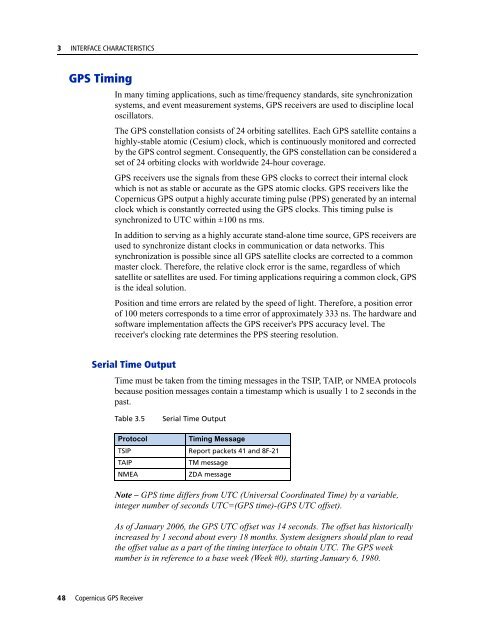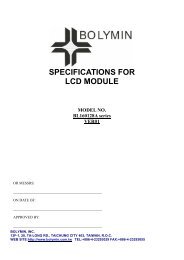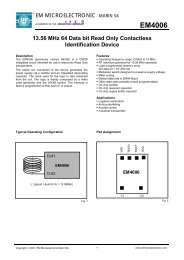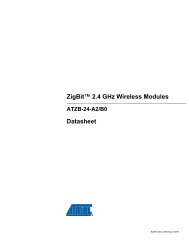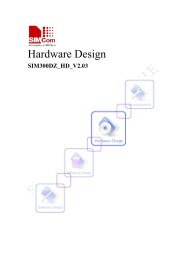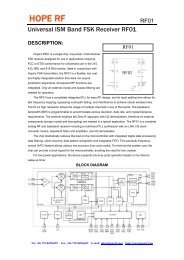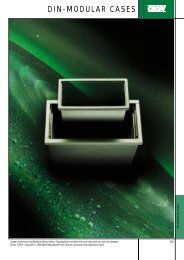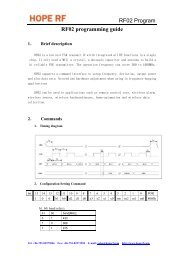REFERENCE MANUAL - FTP Directory Listing - Trimble
REFERENCE MANUAL - FTP Directory Listing - Trimble
REFERENCE MANUAL - FTP Directory Listing - Trimble
Create successful ePaper yourself
Turn your PDF publications into a flip-book with our unique Google optimized e-Paper software.
3 INTERFACE CHARACTERISTICS<br />
GPS Timing<br />
In many timing applications, such as time/frequency standards, site synchronization<br />
systems, and event measurement systems, GPS receivers are used to discipline local<br />
oscillators.<br />
The GPS constellation consists of 24 orbiting satellites. Each GPS satellite contains a<br />
highly-stable atomic (Cesium) clock, which is continuously monitored and corrected<br />
by the GPS control segment. Consequently, the GPS constellation can be considered a<br />
set of 24 orbiting clocks with worldwide 24-hour coverage.<br />
GPS receivers use the signals from these GPS clocks to correct their internal clock<br />
which is not as stable or accurate as the GPS atomic clocks. GPS receivers like the<br />
Copernicus GPS output a highly accurate timing pulse (PPS) generated by an internal<br />
clock which is constantly corrected using the GPS clocks. This timing pulse is<br />
synchronized to UTC within ±100 ns rms.<br />
In addition to serving as a highly accurate stand-alone time source, GPS receivers are<br />
used to synchronize distant clocks in communication or data networks. This<br />
synchronization is possible since all GPS satellite clocks are corrected to a common<br />
master clock. Therefore, the relative clock error is the same, regardless of which<br />
satellite or satellites are used. For timing applications requiring a common clock, GPS<br />
is the ideal solution.<br />
Position and time errors are related by the speed of light. Therefore, a position error<br />
of 100 meters corresponds to a time error of approximately 333 ns. The hardware and<br />
software implementation affects the GPS receiver's PPS accuracy level. The<br />
receiver's clocking rate determines the PPS steering resolution.<br />
Serial Time Output<br />
Time must be taken from the timing messages in the TSIP, TAIP, or NMEA protocols<br />
because position messages contain a timestamp which is usually 1 to 2 seconds in the<br />
past.<br />
Table 3.5 Serial Time Output<br />
Protocol<br />
Timing Message<br />
TSIP Report packets 41 and 8F-21<br />
TAIP<br />
TM message<br />
NMEA<br />
ZDA message<br />
Note – GPS time differs from UTC (Universal Coordinated Time) by a variable,<br />
integer number of seconds UTC=(GPS time)-(GPS UTC offset).<br />
As of January 2006, the GPS UTC offset was 14 seconds. The offset has historically<br />
increased by 1 second about every 18 months. System designers should plan to read<br />
the offset value as a part of the timing interface to obtain UTC. The GPS week<br />
number is in reference to a base week (Week #0), starting January 6, 1980.<br />
48 Copernicus GPS Receiver


